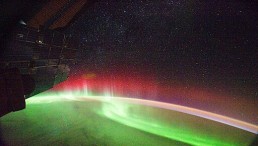Astronomers from the Birla Institute of Technology and Science in Pilani, India, have investigated the properties of a nearby open cluster NGC 6940. Their findings are discussed in the paper "UOCS-XII. A study of open cluster NGC 6940 using UVIT/AstroSat: cluster properties and exotic populations."
What is Open Cluster NGC 6940?
Open clusters refer to groups of stars loosely gravitationally bound to one another. They comprise tens to a few hundred stellar members and are formed from the same giant molecular cloud. Over 1,000 open clusters have been identified in the Milky Way galaxy. Studying these stellar groups in detail can help us understand the formation and evolution of our galaxy.
NGC 6940, or Melotte 232, is an open cluster in the constellation Vulpecula at a distance of 2,500 light years. Discovered in 1784, this stellar grouping is estimated to be 720 million years old and has a near-solar metallicity. Its core radius is approximately 9.8 arcminutes, while its tidal radius is 37.5.
Previous observations of this open cluster suggest that it harbors different exotic stellar populations, apart from normal single and binary stars, like red clump (RC) stars, yellow straggler stars (YSS), blue lurkers (BLs), and blue straggler stars (BSS). However, even if many studies have been performed on this open cluster, these exotic stars have not been comprehensively investigated.
READ ALSO: Sparkling Star Cluster NGC 2660 Seen by Hubble Space Telescope
Exploring NGC 6940 With AstroSat
To look closer at NGC 6940, astronomers Anju Panthi and Kaushal Vaidya employed the Ultraviolet Imaging Telescope (UVIT) of AstroSat. This device objects and their hot companions when in combination with combined-wavelength data. The scientists also used data from ESA's Gaia satellite to identify the cluster members of NGC 6940 and to gather more information on its exotic stellar content.
The astronomers identified 492 members of NGC 6940, 16 of whom were considered exotic stars. In particular, Panthi and Vaidya found one blue straggler star, two red clump stars, two yellow straggler stars, and 11 blue lurker star candidates. Additionally, it was found that three blue lurker candidates most likely have white dwarfs as their companions. Meanwhile, the two yellow straggler stars have subdwarf B (sdB) stars as their likely hot companions, and one of the identified red clump stars has a white dwarf companion.
The study also revealed that NGC 6940 shows evidence of mass segregation, indicating that a dynamic evolution has occurred within the cluster. The massive single stars display the highest degree of segregation, followed by the equal-mass binary main sequence (MS) populations and low-mass single stars.
Aside from this, the observations also found the presence of an extended main-sequence turn-off (eMSTO) feature in NGC 6940. Astronomers assume that the age spread of stars contributes to the observed eMSTO. However, they do not exclude the possibility that the effect of stellar rotation and dust absorption also contributed to this event.
RELATED ARTICLE: Hubble Space Telescope Finds Stunning Globular Cluster With Sparkling Stars Near Milky Way Galaxy [LOOK]
Check out more news and information on Star Cluster in Science Times.














